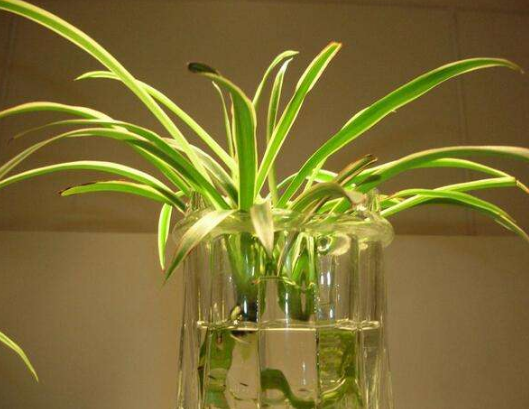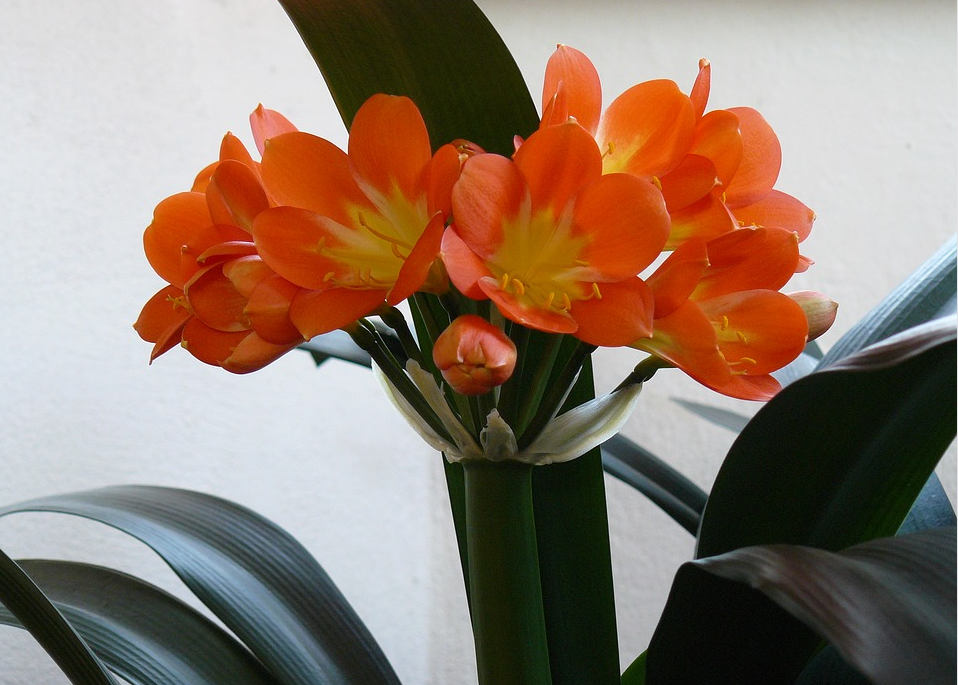Culture methods and matters needing attention of saffron
Saffron is a kind of perennial bulb flower of saffron genus of Iridaceae, and it is also a common spice. Saffron leaves are slender and young, the flowers are delicate and elegant, a variety of colors, with a special fragrance, it is not only the darling of the grass garden, but also the garden embellishment or potted plants as desk furnishings. The following are the culture methods and matters needing attention of saffron.

I. Culture methods of saffron
1. Planting
Prepare the basin soil in advance and choose fertile and loose soil rich in humus. To choose a seed ball, you must choose a strong ball that is large and full and free of mildew spots.
In autumn, bulbs will be planted in flowerpots, one plant per pot in principle, but according to the size of plants and flowerpots, 4 plants can be planted in a pot and covered with soil 5 cm after planting.
Within a week after planting, place the flowerpot in a cool and ventilated place and move it to a brightly lit place for maintenance for a week.
two。 Watering
Saffron is usually planted in autumn, its growing season is winter and spring, the climate is cold and dry, and it needs proper watering.
Seedlings emerge about 20 days after planting, and water is poured once before emergence to facilitate seedling emergence. Pour antifreeze water before winter to increase the temperature of the soil. Water is watered once in mid-April to reduce the harm of dry and hot wind.
Pay attention when watering, do not pour ice water when the temperature is low, the temperature of the water is the same as the room temperature, lest the basin soil freezes and affects the plant growth.
3. Fertilizer application
Before planting, a sufficient amount of base fertilizer should be added to the basin soil, such as cake fertilizer, stable fertilizer, burning soil, plant ash, chicken and duck manure, etc., as well as some superphosphate.
After planting and rooting, the thin liquid fertilizer with balanced nitrogen and phosphorus can be applied every 10 days. Fertilizer must not be too thick, so as not to cause excessive growth of leaves and affect the growth of flower buds.
After saffron blossoms in October, the balanced available fertilizer of nitrogen, phosphorus and potassium should be applied once or twice to facilitate the growth and development of the corm, so that the corm can store enough nutrients for more flowering and good flowering in the coming year.
4. Bulb storage
From late April to early May, the aboveground branches and leaves of saffron gradually turn yellow, and the seed balls can be dug out of the basin for collection. After digging out, the seed bulbs are classified, and the rotten and diseased bulbs are dealt with in time, or removed, or thrown away.
Put the saffron bulb in a gauze bag and store it in a light, cool and ventilated place to keep the room dry. It can be replanted in autumn.
Matters needing attention in planting saffron
1. Selection of varieties
Saffron in winter and spring, flower friends can choose different varieties according to their needs when planting. It is suggested that the spring flowering varieties should be selected, the spring environment is relatively better, and the bulbs are stored in time after flowering, and the flowering time is longer.
two。 The size of the basin
The planting basin should choose a mud basin with a diameter of 15-20 cm, or a plastic basin with good air permeability. 4-6 big balls were planted in each pot and planted in September-October. When you can also use a small basin, 3-5 cm black plastic basin, one basin and one ball.
Time: 2019-04-05 Click:
- Prev

Planting skills: soilless cultivation techniques of Cymbidium
The shape of the hanging orchid is elegant and chic, strange and colorful, and is deeply loved by people. In addition to the traditional use of soil cultivation, it can also carry out soilless cultivation, and gradually replaced the traditional cultivation methods. So what are the steps of Cymbidium in soilless cultivation and what matters should be paid attention to?
- Next

Planting skills: watering and fertilizing methods of Magnolia
Magnolia, also known as Lycoris radiata and Lycoris davidiana, is an ornamental flower of the genus Lycoris of the family Amaryllidaceae. Like thick, well-drained soil and moist soil, avoid dry environment. Many people do not know how to water the orchid. Here are the cultivation skills of the orchid: the watering and fertilizing methods of the orchid.
Related
- Fuxing push coffee new agricultural production and marketing class: lack of small-scale processing plants
- Jujube rice field leisure farm deep ploughing Yilan for five years to create a space for organic food and play
- Nongyu Farm-A trial of organic papaya for brave women with advanced technology
- Four points for attention in the prevention and control of diseases and insect pests of edible fungi
- How to add nutrient solution to Edible Fungi
- Is there any good way to control edible fungus mites?
- Open Inoculation Technology of Edible Fungi
- Is there any clever way to use fertilizer for edible fungus in winter?
- What agents are used to kill the pathogens of edible fungi in the mushroom shed?
- Rapid drying of Edible Fungi

